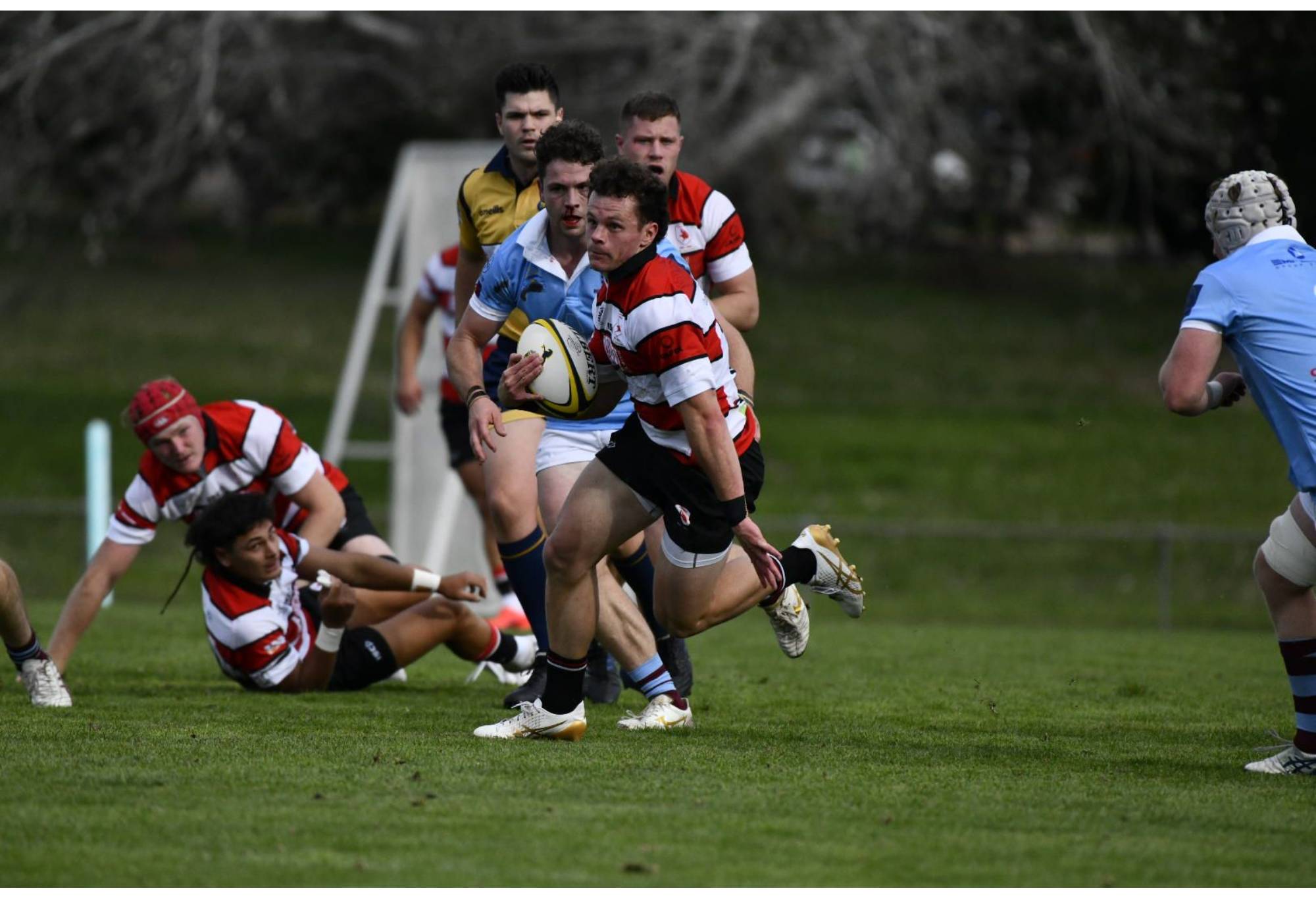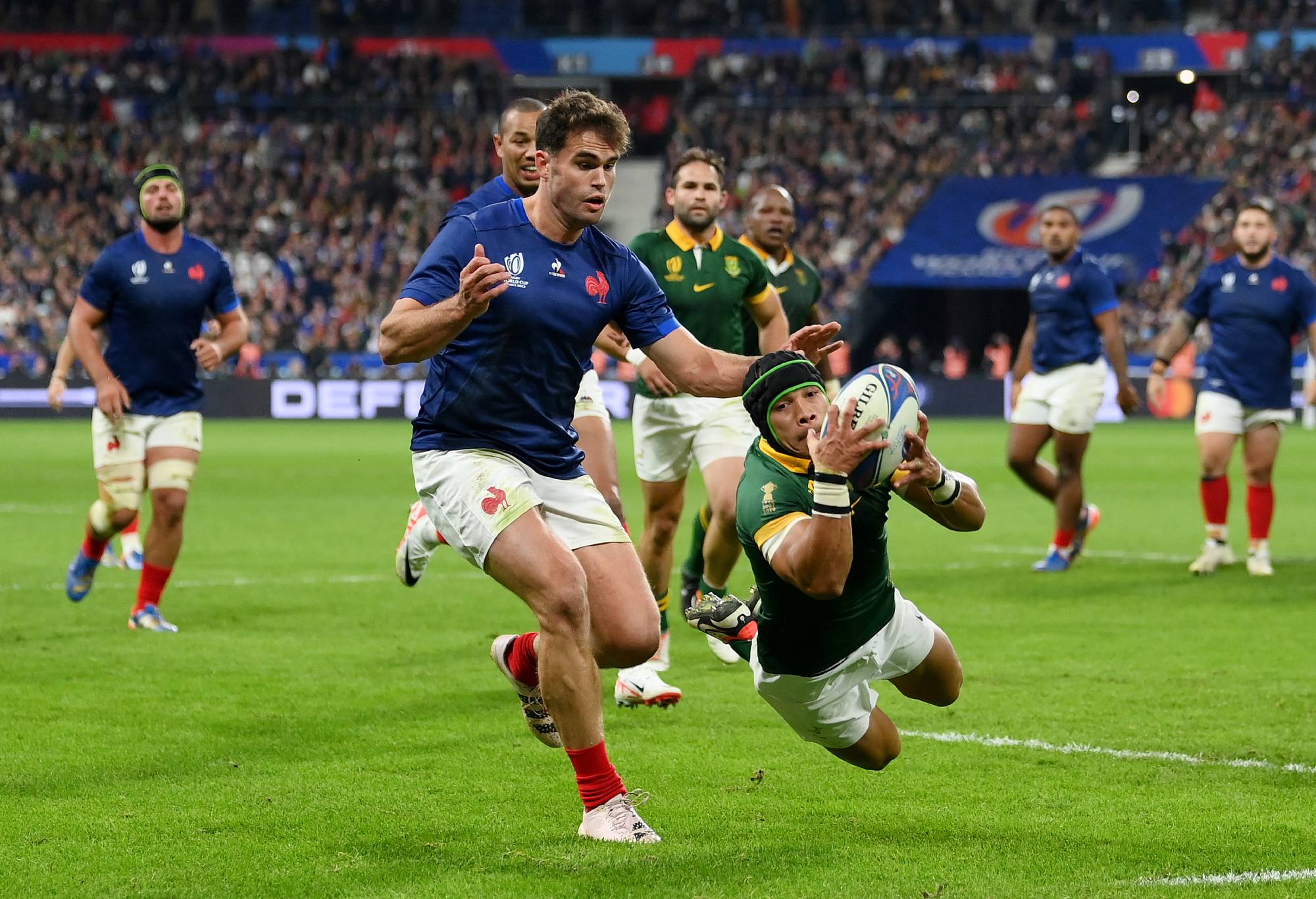They say there’s no substitute for speed in rugby. Now, less than nine months out from the Olympics, Australia’s men’s sevens team has not one but two flyers ready to take the world by storm.
Meet Henry Palmer and Hadley Tonga, who both run the 100 metres at well under 11 seconds and were schoolboy stars on either side of the ditch and are looking to make up some ground ahead of next year’s Paris Olympics.
Palmer, 20, is in line to make his World Series Sevens debut this weekend after being picked in John Manenti’s Australian side for the opening legs of the new SVNS competition in Dubai and Cape Town.
So how quick is he?
In his final year of schooling at Hamilton Boys’ High School, the English-born Palmer ran the 100m in 10.6 seconds to come second in New Zealand.
Earlier this year, he quickly caught the eye of Australia’s sevens high-performance unit when he clocked 10.3 metres per second over 40 metres.
But it wasn’t good enough to top the charts, with 18-year-old King’s School prodigy Tonga running 10.4 metres per second.
It’s something Palmer hasn’t forgotten.
“Hadley has the highest recorded speed. But we’ve yet to have a one-on-one,” he told The Roar.

Henry Palmer in action for the Brumbies in Japan. Photo: Brumbies Media
Softly spoken, Palmer has learned on the run his whole life.
Born in Cambridge, Palmer spent time in France, Sydney and Bathurst before deciding to head across the ditch to finish his final two years of school.
What he discovered was he had to play catch-up on the rugby pitch.
“When I went to New Zealand for school, I realised how far behind I was skill-wise,” he said. “Hamilton has a strong rugby culture. It’s all about footy.”
Palmer was one of the standouts for the Brumbies’ during their run to the under-19s championship over the NSW Waratahs, as he starred on the wing alongside fellow teenage star Shane Wilcox.
His electric pace and ability to finish was one of the reasons Stephen Larkham picked him for the Brumbies’ two-game tour of Japan against Suntory and the Ricoh Black Rams.
There he linked up and learned the lay of the land alongside another speedster Corey Toole, who was a World Rugby sevens rookie of the year before making a strong transition to the Brumbies.
“The first few days I was a bit star-struck, but then I realised we’re here for a reason and I should start talking to them rather than just listening,” he said.
The rising outside back, who grew up idolising Nehe Milner-Skudder, has since returned to the Sevens program and is eager to make an impression on the World Series Sevens stage knowing a strong debut campaign could put him on the path of becoming an Olympian.
“It’ll be cool to see the culture, but I’m not there for a holiday,” he said.
“It was never really a goal until my mum mentioned it. It’s been on the back of my mind after the Sevens [training sessions] against Japan and then I went to Oceania and now Dubai. It’s there but not at the same time.”

Henry Palmer in action for Tuggeranong Vikings in Canberra. Photo: ACT Brumbies
Working his way back from the sidelines after a hamstring injury is another flyer in teenager Tonga, who earlier this year signed a three-year deal with the Australian Sevens team and the Waratahs.
The youngest of six, Tonga was born to play rugby after his father, Sione, played for Tonga before taking his career to Japan.
Tonga, 18, is the latest schoolboy sensation out of The King’s School following in the footsteps of NRL stars Joseph Suaalii and Will Penisini.
It’s no surprise therefore that the duo are two players Tonga looked up during his secondary education.
“I actually looked up to two people during my time at school and that was Will Penisini, mainly because how he leads people and how he is mentally fit, and Joseph Suaalii because of his skills and he’s a similar position to me,” said Tonga, who clocked a 10.84 over 100m in the wet in year 11.
And the other? Cheslin Kolbe, the two-time World Cup winner pocket rocket who shares many of the same physical characteristics as Tonga.
“When I was growing up, I was looking up to Jonah but then I slowly transitioned to modern players like Cheslin Kolbe, mainly because they have similar traits to me,” Tonga said.
“Cheslin Kolbe is a short player just like me, he’s strong, fit, he’s quick. They’re similar traits to what I have.”

He might be one of the shortest players in the world, but Cheslin Kolbe has won consecutive World Cups. (Photo by Mike Hewitt/Getty Images)
One person rubbing his hands together is Manenti.
“Speed is so important in our game – and they’ve got buckets of it,” he said.
Ensuring they get time and space is now essential but having also had Toole in the system in recent years, it’s something the 2022 World Series champions are aware of.
But the arrival of Palmer and Tonga is also another sign that the little man with super pace is coming back into fashion.
While the Wallabies went all in on power and pace under Eddie Jones, the Springboks showed that there is no substitute for pace when little pocket rockets Kolbe and Kurt-Lee Arendse scored tries for fun at this year’s World Cup.
“Well, I think so. It depends how you want to play,” Manenti said.
“At the World Cup, we went the other way with Marky [Nawaqanitawase] and Suli [Vunivalu], big in the air, big kick chase guys, run over the top; South Africa played their wingers differently.
“But if you look at Australia’s pool, Georgia and Portugal had some serious wheels in their team.
“I think there’s room for these guys to go forward into Super Rugby and create opportunities for themselves but it’ll depend on how a coach wants to play. Is Corey Toole capable of playing for the Wallabies? Absolutely.
“We’re [the Wallabies] trying to play a power game in some parts of the field but not in others. Have we got the skills? How many times have we seen the winger at the end of a backline in most of our footy? A lot of our footy seems to be so structured and pods; we rarely saw Marika [Koroibete] or Mark with space at the end of a backline.”

Australia 7s head coach John Manenti is looking forward to seeing how his young speedsters perform ahead of next year’s Olympics. (Photo by Matt King/Getty Images)
Manenti is hoping both Palmer and Tonga impress over the next six months to give him a selection headache ahead of Australia’s bid to win a maiden medal in the men’s sevens competition.
But he is also closely monitoring Toole and Rebels-bound Darby Lancaster, with both speedsters still firmly in the coach’s plans despite transitioning to Super Rugby programs.
“Corey was around those numbers. We marker metres per second, so anyone running regularly 10 metres per second or better, which is what those two and Corey and Darby did a few times, those guys who can do those numbers with a footy in their hand, that’s rapid. It’s pretty exciting,” Manenti said.
“Ultimately, you need a group of those guys coming through because normally they can’t do it a massive amount of times and two or three efforts will sap them.”
































































































